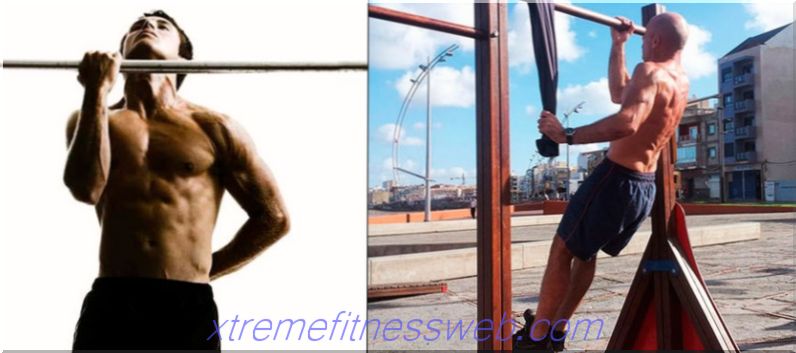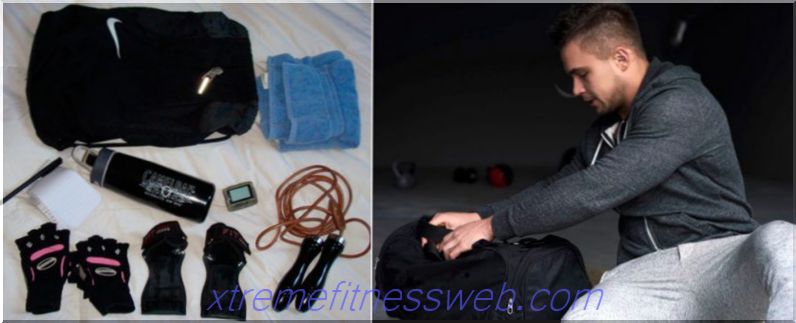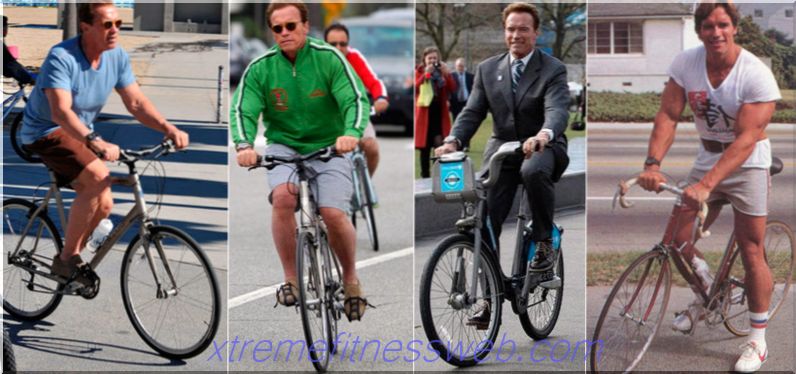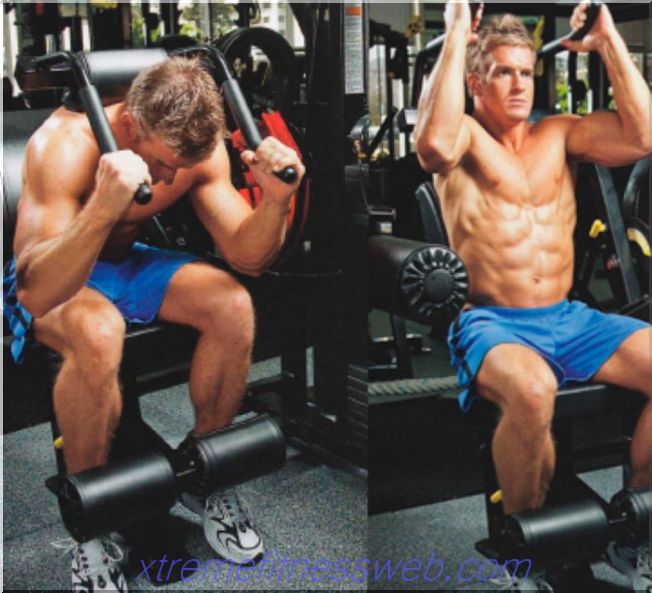- Why stretch?
- Types of Stretch Marks
- Basic recommendations for stretching for beginners
- A set of exercises for stretching at home
- Stretching for beginners on video

Stretching exercises improve muscle recovery after strength work. They are an essential part of a weight loss, recovery, or strength training plan. Muscles need to be pulled by athletes, dancers, and simple office workers. Hypodynamia, an unnatural posture while working at a computer, “walking” while sitting in a car - all this strengthens the muscles, deprives the joints of the natural range of motion and requires that the person include stretching exercises in the training program. You can stretch each time after a power or cardio, giving 30 seconds to the main muscle groups, or you can by singling out a stretching workout in one day. For beginners, exercises are shown in natural amplitude, without “springs” and pushing the body into a pose through pain. Such movements can be performed at home independently.
Content
- 1 Why stretch
- 2 Types of stretch marks
- 3 Key Tips for Stretching Beginners
- 4 Complex exercises for stretching at home
- 4.1 "Cat" for the back
- 4.2 Exercise for stretching buttocks
- 4.3 Stretching the runner
- 4.4 Stretching the anterior thigh
- 4.5 Chest
- 4.6 Lateral thigh
- 4.7 Press and front thighs
- 5 Stretching for beginners in the video
Why stretch?

In short, stretching is the only chance for the body to compensate for all those overloads, and axial loads that we experience during strength work, and household activity. Only during stretching, the joints do not experience compression, which is the best prevention of inflammation. In addition, stretching improves mobility in everyday life and relieves pain.
The advantages of stretching are:
- It relieves muscle stiffness, gives you the ability to move freely;
- Helps with plastic and grace even for those who have obvious problems here;
- Improves mobility in the joints;
- Helps to perform strength exercises with the right technique;
- Provides muscle with blood and oxygen for recovery;
- Relaxes the central nervous system;
- Strengthens ligaments, and neuromuscular connections;
- Works with coordination of movements;
- Helps to move more smoothly and more accurately in dances and martial arts;
- Removes posture imbalances
Types of Stretch Marks

The inhabitants know only one type of stretching - this is when a person stretches the muscle himself, calmly and smoothly. Few people know, but besides this, there are exercises that are not at all associated in the minds of the masses with the stretch, but nonetheless are stretching. So, by type, you can divide the exercises into:
- Ballistic stretching is a quick sweeping movement that can be seen in the arsenal of fighters and gymnasts, it is forbidden in fitness, as with low mobility of the joints and lack of control over the center of the body can lead to injury;
- Passive stretching - a trainer or massage therapist pulls the client’s muscles while he is just trying to relax. Despite the sweet description, it is painful and unpleasant. The success of the event depends entirely only on the qualifications of the coach and the ability to relax;
- Active - we stretch "the old fashioned way" ourselves, taking a pose for stretching and putting pressure on the stretched muscle group, the most popular type of stretching, available for beginners, at home and for self-development;
- Static - in general, it is synonymous with active stretching in a static pose. But in Russian-language sources, the phenomenon is associated with the training of yogis and gymnasts. In fact, any exercise in which movement occurs only due to the natural extension of muscles can be called static.
- Dynamic - stretching exercises are movements performed in full amplitude, but without burdening. An example is a warm-up before an aerobics class, when a client transfers weight from one leg to another, or performs a series of deep squats to warm up his legs. Types of stretch are also referred to as dynamic stretching, when the muscle tension is slightly relaxed, so that later it can be strengthened due to the greater amplitude in the muscles.
Basic recommendations for stretching for beginners

Beginners should not be aggressively stretched in a ballistic or dynamic style. Dynamic elements are allowed, but they must be performed in an anatomically natural plane and controlled. For example, you should not “push” yourself into the transverse twine on the floor, you can only spring a little in the position when the legs against the wall are raised up and spread apart.
Important: beginners must follow a simple rule - stretching is performed either after a workout, or after a thorough warm-up. When warming up, you should carefully raise the pulse with simple aerobic exercises, and then perform a series of movements that involve the whole body. Universal warm-up - exercises for abs, push-ups and squats.
Recommendations for beginners:
- Do not start with splits . It's great and impressive, of course, but you can easily get hurt. If the target is transverse twine, first stretch the adductors and abductors of the thighs, as well as the back surface of the legs, then stretch the legs raised for a while by the “corner”. Gradually, from training to training, you can move on to a smooth stretch of twine. But usually you need to devote this work to month 3 to see serious progress. Cross twine is technically easier for many, it requires a good stretch of the back and front of the thighs, and this needs to be concentrated;
- The back muscles are the most underrated group in terms of stretching. Not only “kitty-dogs”, but also reverse deflections should be in the program. The training program, supplemented by a good stretching of the back, is more effective than a plan in which only legs and arms are stretched. There is an opinion that it is easier to sit on a twine to a person whose back is flexible and mobile than to someone who does not have the opportunity to bend his back;
- Warm up with quality - without preliminary warming up, you do not need to do even simple stretch marks. And they do not replace workouts on their own. Stretching helps to get rid of muscle clamps and cramps only under one condition - a person does not stretch to cold muscles;
- The presence of severe pain, especially in the joint, ligament, or muscle, is a signal to stop the stretching exercise. Discomfort and a slight sense of resistance are the norm, severe pain is not. It is necessary to stretch gently, not aggressively, and not exceed the capabilities of the body in order to achieve a result without “kickbacks” due to injuries;
- There is no need to drag on holding your breath, perform exercises from body flex or other gymnastics with holding your breath, if the body is not ready for this. Hypoxia has a bad effect on the elasticity of muscle fibers and can only be forgiven by the human body, which does not stretch too deeply or holds a short breath;
- Copy other practitioners, competitive spirit and other joys of social life in joint training leave to those who have been practicing for a long time. It is necessary to stretch the muscles, listening to your own sensations, and not to force events;
- Sliding, stretching “minus”, putting pieces of fabric under your legs to better glide are also bad ideas when it comes to fitness beginners. It is worth working only with your own body until the flexibility and mobility of the joints improves and the muscles become more elastic
It is believed that stretching classes should be carried out by everyone. It is based on the popularity and affordability of yoga. In fact, stretching is contraindicated throughout the recovery period after injuries, during exacerbation of hypertension, with cardiac arrhythmias, during pregnancy, if there is a risk of placental abruption, and with exacerbation of chronic diseases. The wrong choice is to replace the workout with a stretch if you have a cold or if you need to reduce the intensity of the session.
A set of exercises for stretching at home

Before starting the training, we will dispel the prejudices and misconceptions about stretching:
- Stretching in adulthood is useless. Yes, it’s easier for children to reach out, but perseverance and perseverance will solve the problem for adults as well;
- Stretching is not necessary for weight loss. In fact, stretching exercises improve metabolism, accelerate all processes, including fat burning. For weight loss, you need only one condition, a calorie deficit. Stretching also helps increase calorie expenditure. And he indirectly affects the quality of strength training and speed during cardio;
- Stretching is a painful process. Not always, sometimes muscle stretching causes only slight discomfort, you need to concentrate not on it, but on the breath, and the sensations will become more pleasant;
- Stretching is not suitable for some people because of the structure of the body and the lack of quality flexibility. In fact, even such people should relieve tension and muscle clamps in order not to get injured during regular workouts.
"Cat" for the back

Get up straight, fall down on all fours, palms under your shoulders, in the projection of the joint, knees under the hips. With an inhalation, raise the center of the back up, bend, exhale, as if to bend in the opposite direction, allowing the stomach to “sag”. Start with a short period, about 20 seconds in each position, continue, increasing the stretching time.
Buttocks stretching exercise

Starting position - lying on your back, the stomach is tightened so that the natural deflection in the lower back is preserved, but the back remains stable. Extend one leg perpendicular to the body, grab it with your hands and pull towards the shoulder. If the amplitude of movement is not enough, you can use a belt, rope, towel or belt to put on your leg. There should be no discomfort in the back, you need to actively stretch, but do not tear the buttock off the floor. Twisting in the spine is also not allowed. It is recommended to monitor the time spent under load, so that the stretching is symmetrical, you need to make it the same on both sides.

Variation : sit on the floor on the buttocks, bend the supporting leg so that the heel is close to the groin, bend to the stretched thigh, grab the toe with your hands
Runner stretching

This is a stretch of the calf muscle against the wall. You need to lean on the wall with your hands, and move away from it, as if you were going to carry out a lunge. The “back” leg stretches back with the heel, the “front” - bends at the knee joint.
Stretching the anterior thigh

Stand directly at the support, grab the support with your hand, transfer the weight to the foot of the same name, free - grab the hand at the ankle. Pull the heel to the buttock, and push the pelvis forward.
Rib cage

Clasp your hands into the lock in front of you and stretch it behind your head. In this case, it is necessary to draw in the stomach, and as if to lower the shoulders from the ears so that the trapezius muscle does not take on all the work.
Lateral thigh

Sit straight, stretch both legs forward, and fold heel to heel, bending your knees. Stretch your body forward so that your knees fall to the floor. Hold the ankles with your hands so that they do not part.
Press and front thighs

Lie on your stomach and take the pose of the cobra, that is, push your hands off the floor and stretch the front surface of the body so that the chest and stomach are torn off the floor.
Stretching for beginners on video
Choosing a banner under the video, you should first view the complex from beginning to end, and if necessary, stop recording to clarify the movement. Only then, after warming up, you can start practicing at home under the video. The beauty of stretching workouts is that they allow you to practice more gently, even in the smallest apartment.







